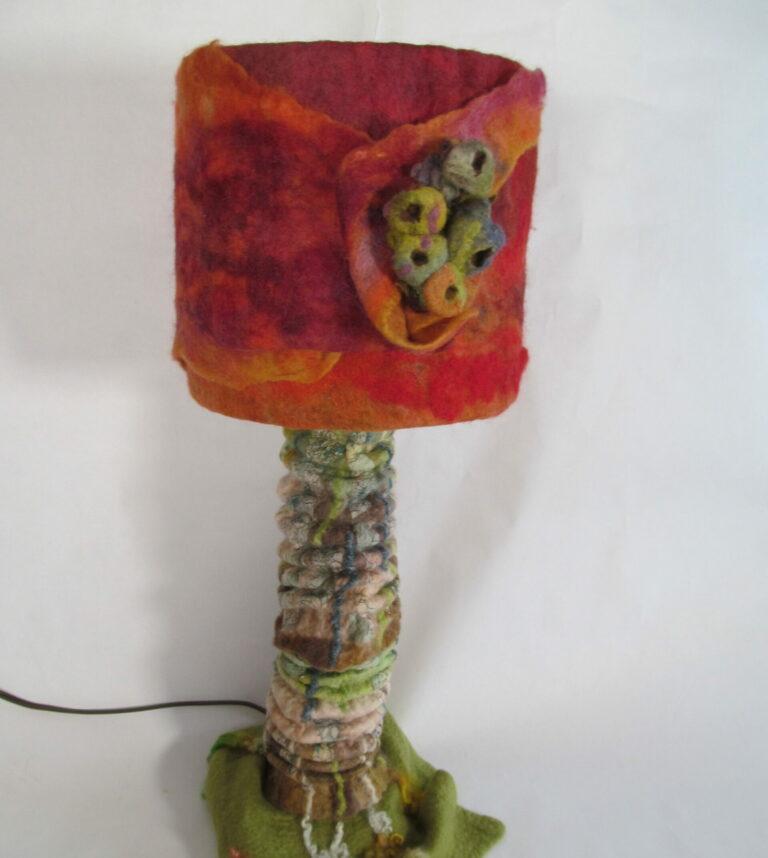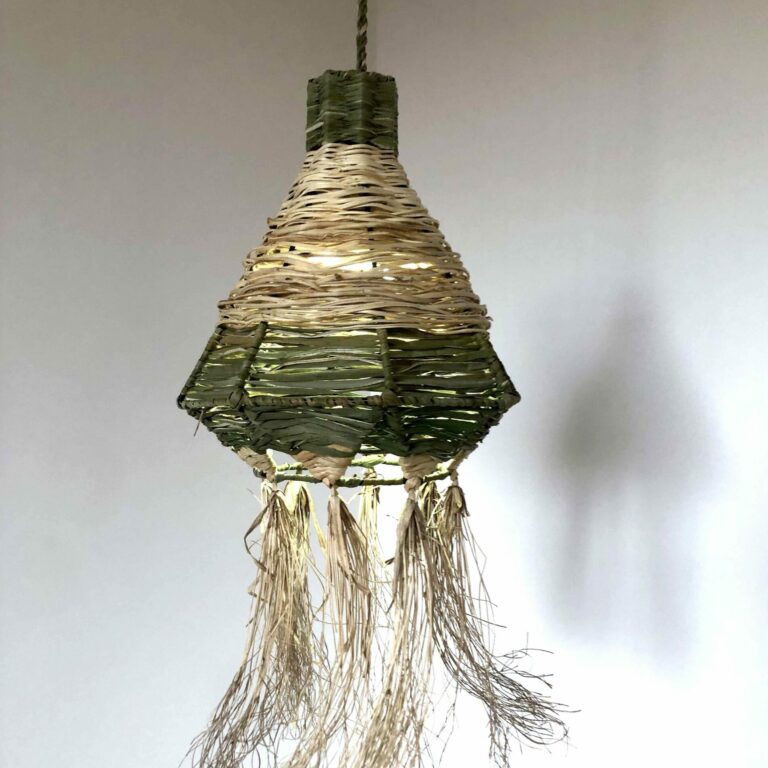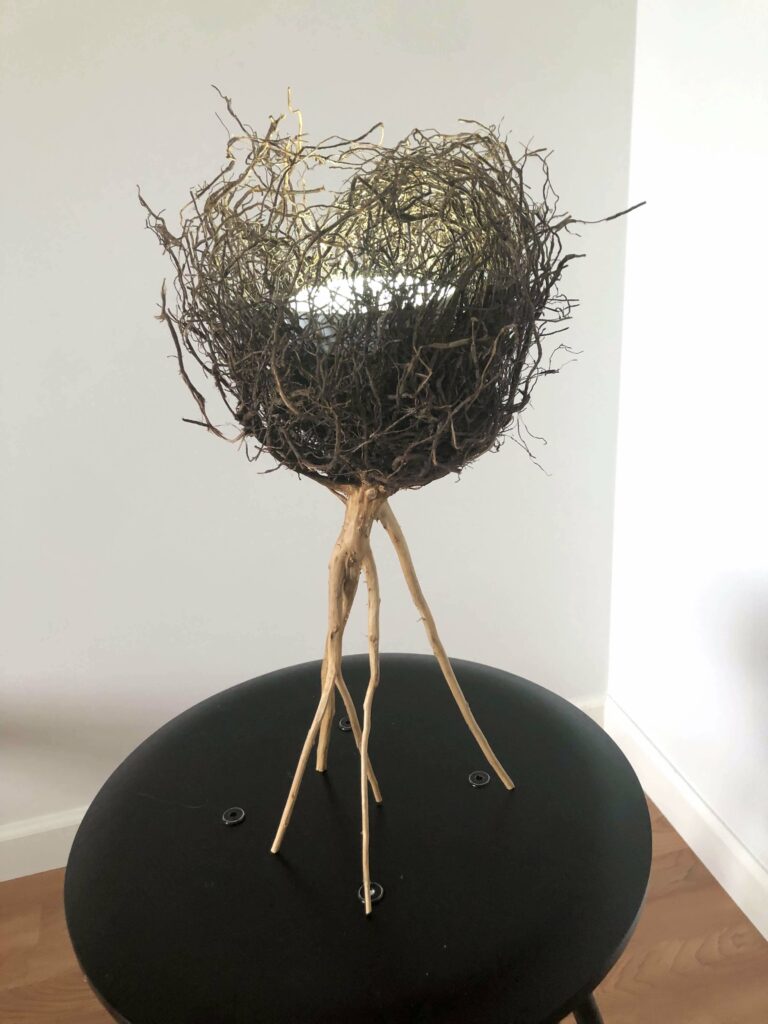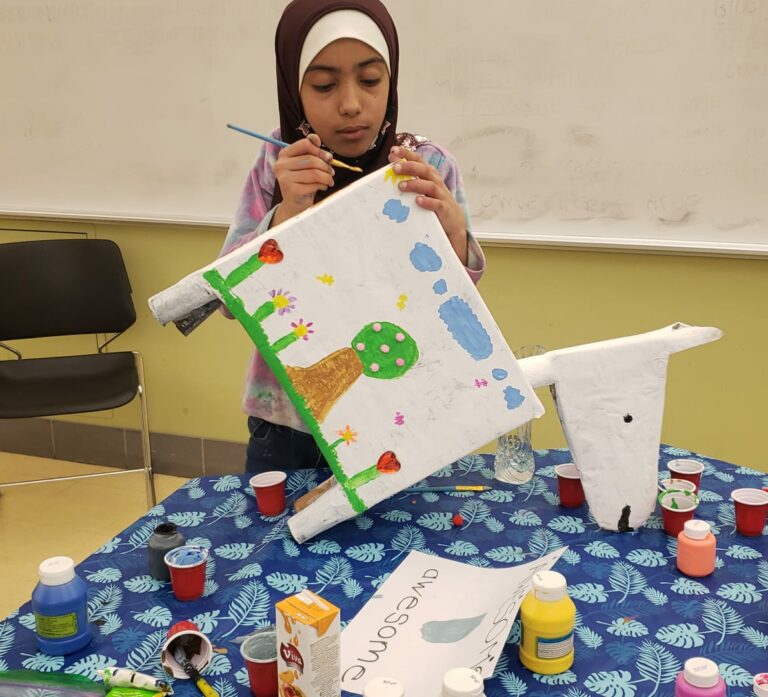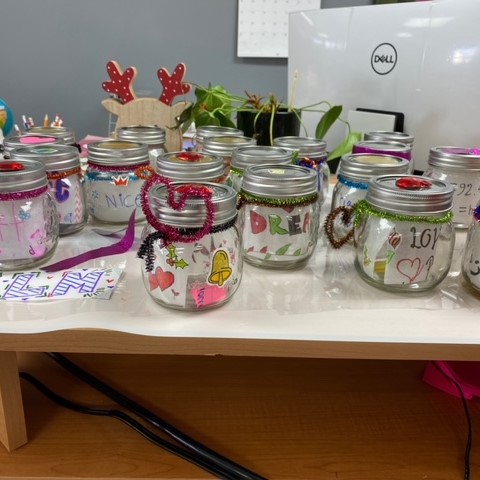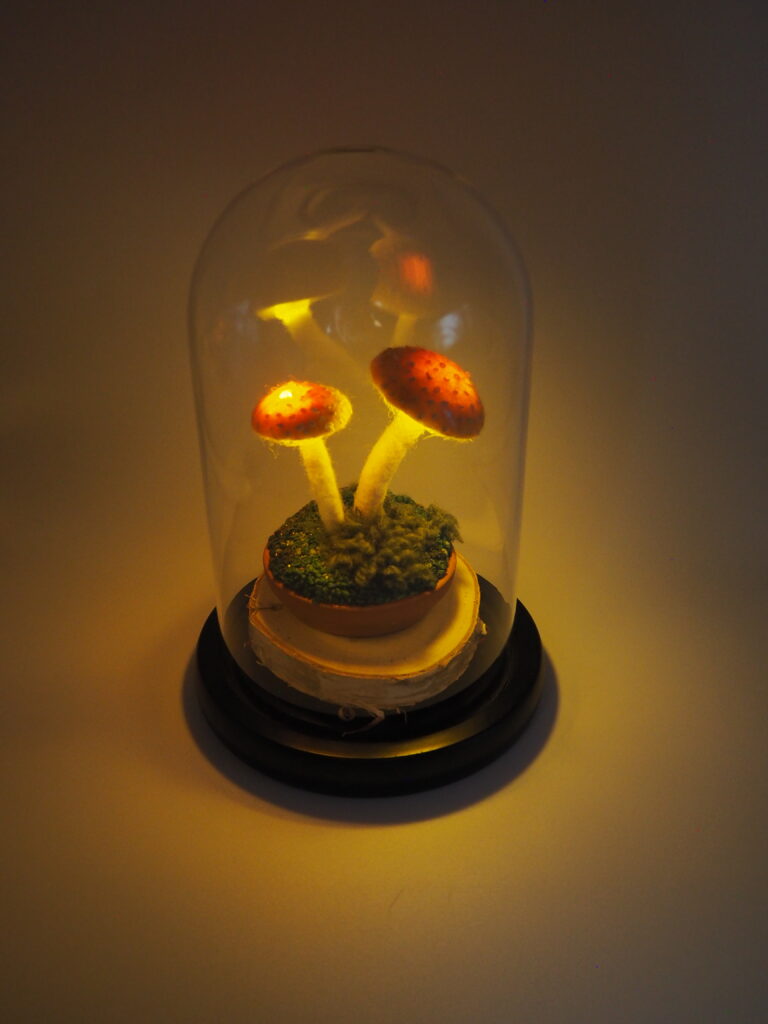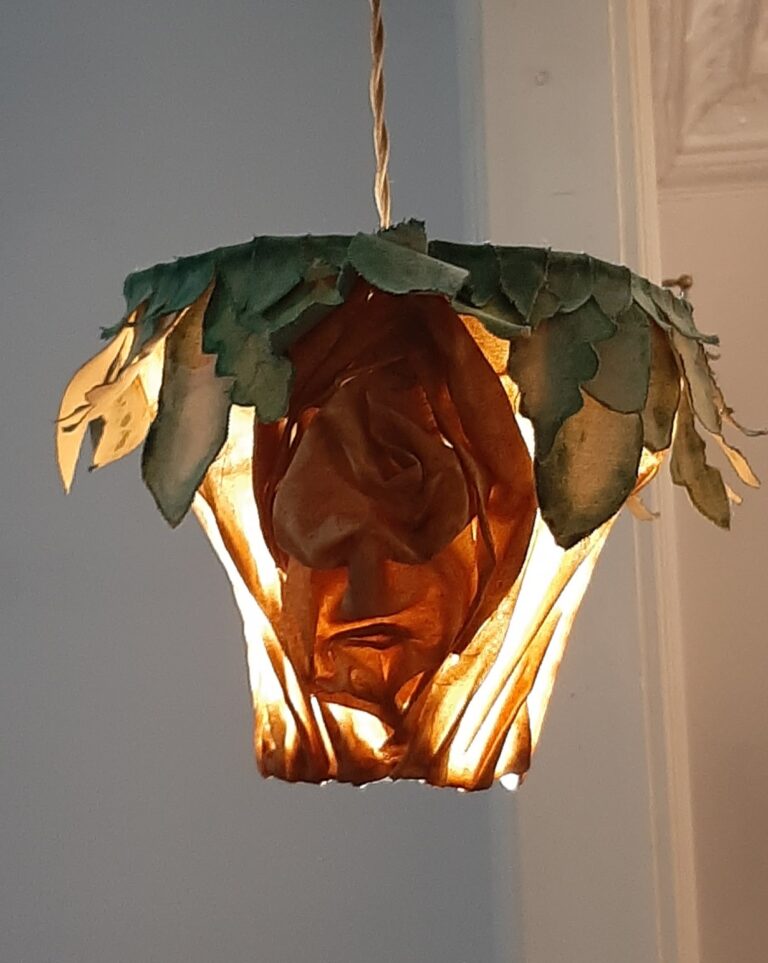Shedding a light on environmental issues close to our heart
Inspiring Action. Nurturing Artists. Building Community
Explore the Conservation Council of New Brunswick’s Community Arts Project
Shedding a Light is a collaborative installation created by numerous From Harm to Harmony artists, in an effort to inspire climate action through their work. Each unique piece is created by an individual artist, using their chosen medium(s) to visually and metaphorically illuminate a particular environmental concern that is close to their heart. As viewers reflect on each artists’ concern, they are invited to follow their curiosity by linking to relevant petitions and/or pledges of personal action (documented on the QR-coded tiles lit by each lamp).
As Carl Jung notes, “As far as we can discern, the sole purpose of human existence is to kindle a light in the darkness of mere being.” So, as we all face the realities of the climate emergency, these artists hope that this installation can serve as a beacon of hope for real environmental change in which everyone can take part.
'Last tree standing' by Emerise Nowlan (Moncton)
Environmental focus — Deforestation in New Brunswick
Created by Emerise Nowlan, this art piece was inspired by the issue of clearcutting which can have a big impact on the diversity of tree species in New Brunswick since the tree cutting is often followed by replanting of a monoculture.
Forest management in New Brunswick must consider first and foremost adequate habitat for wildlife, protection for streams and rivers, climate change impacts and forest diversity in terms of age and species. The Acadian forest has been listed as one of six endangered forests in North America. New Brunswick makes up a large portion of the Acadian forest. Ensuring that the Acadian forest is properly managed here in New Brunswick is key to maintaining this unique forest region.
Engagement Opportunity:
The Canadian Parks and Wilderness Society (CPAWS) is concerned that our forest ecosystem will not be able to sustain these additional pressures from industry in the long run, and is urging the government to abandon this forestry plan. Use CPAWS letter-writing tool to let the Minister of Natural Resources know what you think of this forestry plan.
'One World' by Heather Marmura (Fredericton)
Environmental focus — Plastic Waste
Heather Marmura loves beachcombing. It’s always a surprise to find what is washed up from the sea. There are always natural treasures –shells, wood, beautiful stones– and of course human debris–rope, glass, pottery, nets and other plastic fishing gear. This lamp is created from a repurposed from glass and a plastic marine buoy collected from Maritime shores.
Our activities as consumers pose a constant threat to the natural environment and especially to our oceans. This artist encourages you to think about the ways you can play, create and engage with the world by reducing your consumption in general, and of plastics in particular.
Engagement Opportunity:
In October of 2020, Canada committed to finalizing regulations that would ban harmful single-use plastics by the end of 2021, but that hasn’t happened. And every day without meaningful action means upwards of 8,900 tonnes of Canada’s plastic trash piling up in landfills, burning in incinerators, and polluting our oceans and environment.
Sign the Oceana petition to urge Prime Minister Justin Trudeau and Minister Guilbeault to take stronger action to reduce single-use plastics by expanding the proposed ban list and ensuring it includes the most common and harmful single-use plastics.
Use Environmental Defence’s letter-writing tool to let Prime Minister Justin Trudeau and Minister Guilbeault know you expect them to support ambitious action on plastic pollution.
The Last Remaining Ancient Ecosystems by Juliana Bedoya (Vancouver)
Environmental focus — Old-growth forest protection in BC
Created by Juliana Bedoya, this art piece was crafted using a metal structure sourced a thrift store and woven invasive and native plant fibres that were locally harvested on Vancouver Island, such as: cattail, English ivy and papyrus (Received from New Brunswick artist by Ralph Simpson, another member of the H2H group and USB rechargeable).
This lamp invites visitors to appreciate and respect the interconnectedness of all ecological systems and sign the petition to stop logging at Fairy Creek and all old forests in Canada.
Protecting old growth forests is one of the most effective things we can do to mitigate the impacts of climate change. Old-growth and all primary forests are irreplaceable and are interconnected natural systems that provide habitat to multiple life forms.
Engagement Opportunity:
The Ancient Forest Alliance is concerned that the BC government isn’t making progress on their promise to work with First Nations to implement all 14 recommendations made by the Old Growth Strategic Review panel, bringing about a paradigm shift in the way old-growth forests in BC are managed.
Use Ancient Forest Alliance’s letter-writing tool to demand the BC government deliver on their campaign promise to protect the remaining ancient rainforests in BC while supporting First Nations rights and communities.
'Upside Down' by Juliana Bedoya (Vancouver)
Environmental focus — Old-growth forest protection in BC
Created by Juliana Bedoya, this art piece was crafted using found tree (driftwood) by the beach on Vancouver Island. This tree was placed upside down exposing its roots to symbolize the lack of action from BC’s local government to stop the ongoing logging of old growth forests, especially on Vancouver Island.
Protecting old growth forests is one of the most effective things we can do to mitigate the impacts of climate change. Old-growth and all primary forests are irreplaceable and are interconnected natural systems that provide habitat to multiple life forms.
Engagement Opportunity:
Stand.Earth is concerned that the BC government isn’t making progress on their promise to work with First Nations to implement all 14 recommendations made by the Old Growth Strategic Review panel, bringing about a paradigm shift in the way old-growth forests in BC are managed. Sign the Stand.Earth petition urging the B.C. government to act now to ban logging for the most at-risk old-growth forests.
'Forest Light' by Gary Crosby (Oromocto)
Environmental focus — Deforestation in New Brunswick
Created by Gary Crosby from recycled hardwood flooring blanks and powered by the sun, this light is designed to focus our attention on deforestation in New Brunswick.
Forest management in New Brunswick must consider first and foremost adequate habitat for wildlife, protection for streams and rivers, climate change impacts and forest diversity in terms of age and species. The Acadian forest has been listed as one of six endangered forests in North America. New Brunswick makes up a large portion of the Acadian forest. Ensuring that the Acadian forest is properly managed here in New Brunswick is key to maintaining this unique forest region.
Engagement Opportunity:
The Conservation Council of New Brunswick has long advocated that the province put and end to the old-fashioned, taxpayer-funded practice of spraying New Brunswick forest with herbicides. Quebec banned the spraying of its public forest 20 years ago. Glyphosate, the main active ingredient in most herbicides used in Crown forest operations in New Brunswick, was listed as a probable carcinogen by the World Health Organization’s cancer research agency, the International Agency for Research on Cancer (IARC), in 2015.
This artist invites you to join the Conservation Council of New Brunswick and their ongoing work to promote scientifically-based ecological forest management and demand an end to spraying on the province’s Crown forest.
'Treeline' by Gary Crosby (Oromocto)
Environmental focus — Deforestation in New Brunswick
Created by Gary Crosby using recycled hardwood flooring blanks, the Treeline Light is designed to focus our attention on deforestation and creating a sustainable forest.
Forest management in New Brunswick must consider first and foremost adequate habitat for wildlife, protection for streams and rivers, climate change impacts and forest diversity in terms of age and species. The Acadian forest has been listed as one of six endangered forests in North America. New Brunswick makes up a large portion of the Acadian forest. Ensuring that the Acadian forest is properly managed here in New Brunswick is key to maintaining this unique forest region.
Engagement Opportunity:
The Conservation Council of New Brunswick has long advocated that the province put and end to the old-fashioned, taxpayer-funded practice of spraying New Brunswick forest with herbicides. Quebec banned the spraying of its public forest 20 years ago. Glyphosate, the main active ingredient in most herbicides used in Crown forest operations in New Brunswick, was listed as a probable carcinogen by the World Health Organization’s cancer research agency, the International Agency for Research on Cancer (IARC), in 2015.
This artist invites you to join the Conservation Council of New Brunswick and their ongoing work to promote scientifically-based ecological forest management and demand an end to spraying on the province’s Crown forest.
'Youth for Climate Justice, Riding for the Earth' by Josephine Savarese, Dirk Groenenberg and Maya Al Khlief (Fredericton)
Environmental focus — Youth Education and Climate Justice
Created by Maya Al Khlief, a young Canadian newcomer with an agricultural background who helps share the workload for her family garden, this papier-mache lamp shines a light on the growing impact the climate crisis will have on future generations. This Maya’s second time participating in from Harm to Harmony, based on her love of gardens and green space.
Youth and future generations will bear the brunt of the climate crisis. Involving youth and newcomer youth in climate crisis conversations, decision-making processes and public awareness campaigns is key to forward movement towards climate justice. This is especially so given that many newcomers have direct experience with the climate emergency as one driver of their displacement.
Engagement Opportunity:
While actions by government, industry and other large emitters will have the most impacts in reducing greenhouse gas emissions, personal and household actions are also very important. As part of the For the Love of Creation campaign, you are invited to take action to reduce your personal or household greenhouse gas (GHG) emissions and/or engage in acts of solidarity with justice-seeking communities.
'Uniting the World, Lighting the Future' by Josephine Savarese (Fredericton)
Environmental focus — Youth Education and Climate Justice
Created under the direction of educator and community advocate, Josephine Savarese, with a team of volunteers, newcomer youth came together to express their despair and hope in a one word small glass lantern project. Approximately 20 youth with birth and family ties to countries ranging from Somalia to Syria, the youth shared food, laughed during ice-breaker activities, and applied their creative talents to creating these small lamps.
The project highlights the continued need for youth education. Given that youth voices are among the strongest calling for climate action, it is essential that they are provided with spaces to learn, to grow, and to gather information. Educational settings offer opportunities for youth to practice using their voices and to share their stories. Education is a means to empower youth – to join the fight for human security and justice, including climate justice.
Engagement Opportunity:
‘Together for Learning’ is an international campaign to promote quality education and lifelong learning for children and youth that are: refugees; forcibly displaced from their home region, due to violence, natural disasters or other external causes; living in host communities where refugees or displaced people are staying. This three-year campaign will help set the stage for the second Global Refugee Forum in 2023. Learn how you can get involved today!
'The Forest Floor: Shedding a Light on Biodiversity' by Danielle Smith (New Maryland)
Environmental focus — Biodiversity
Created by Danielle Smith using needle felting, embroidery and rug hooking techniques. These one of a kind handmade mixed media textile pieces capture a small, very diverse piece of the forest floor.
Biodiversity provides many key benefits to humans that go beyond the use of its resources. Although Biodiversity loss is occurring globally at a rapid pace, we can mitigate this loss through protected natural areas, marine conservation areas, and proper Indegenous- led conservation management practises.
Engagement Opportunity:
With the federal government’s commitment to invest $3.2 billion, over five years, to establish protected areas on land and inland waters, Nature Canada wants to ensure that progress on nature protection remains a top priority in the next upcoming federal budget..
Sign the Nature Canada petition urging the federal government to ensure nature and the expansion of protected areas are priorities in upcoming federal budget commitments.
'Mother Tree' by Kristin Singh (Hampton)
Environmental focus — Deforestation in New Brunswick
Created by Kristin Singh, this art piece was created using rawhide and inspired by the Mother trees in our old-growth forests. Mother trees are the largest trees in forests. They act as the heart for vast below-ground mycorrhizal networks. These networks support young trees by infecting them with fungi and ferrying them the nutrients they need to grow.
Forest management in New Brunswick must consider first and foremost adequate habitat for wildlife, protection for streams and rivers, climate change impacts and forest diversity in terms of age and species. The Acadian forest has been listed as one of six endangered forests in North America. New Brunswick makes up a large portion of the Acadian forest. Ensuring that the Acadian forest is properly managed here in New Brunswick is key to maintaining this unique forest region.
Engagement Opportunity:
The Canadian Parks and Wilderness Society (CPAWS) is concerned that our forest ecosystem will not be able to sustain these additional pressures from industry in the long run, and is urging the government to abandon this forestry plan. Use CPAWS letter-writing tool to let the Minister of Natural Resources know what you think of this forestry plan.

